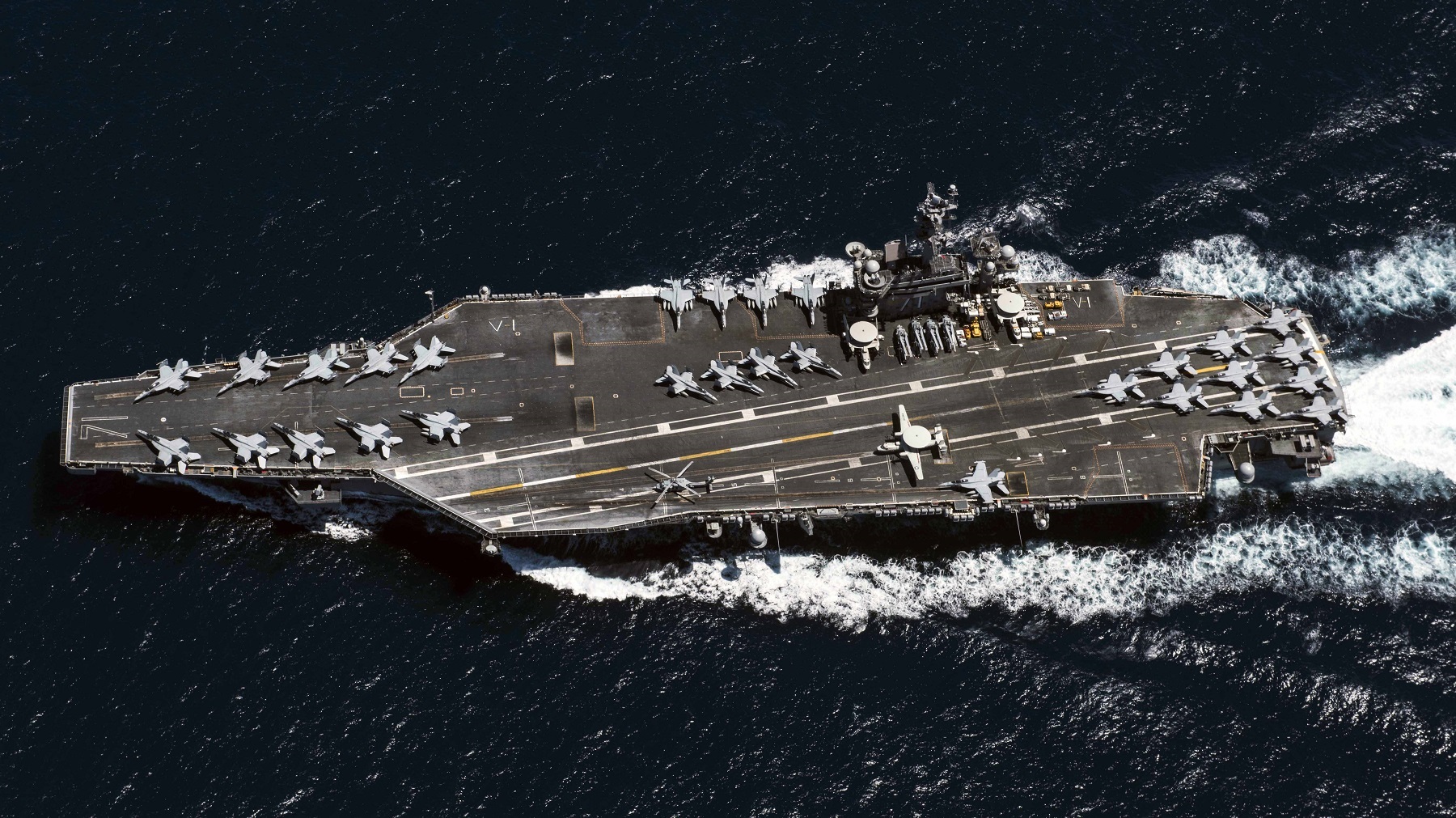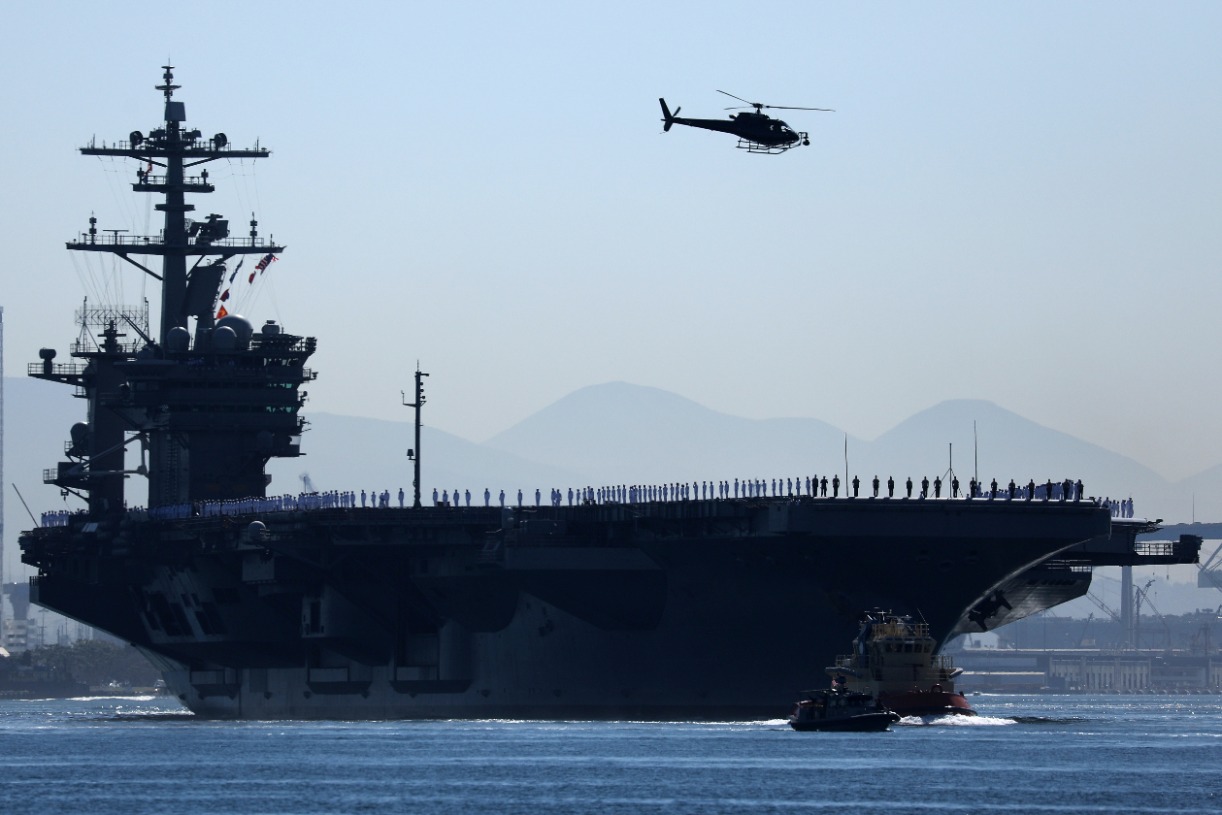"Sir, the Aircraft Carrier Is Gone": A French Nuclear Submarine 'Sank' A Navy Carrier
During a simulated war game, a French Rubis-class submarine snuck past every American line of defense and landed a fatal blow against a US Navy aircraft carrier in a simulation.
Summary and Key Points: In a 2015 joint exercise, a French Rubis-class submarine managed to slip past the US Navy's defenses and simulate the sinking of the supercarrier USS Theodore Roosevelt, along with four escort ships. The war game, involving Carrier Strike Group 12, highlighted vulnerabilities in the US Navy's defense systems.

-This outcome is particularly concerning given rising tensions in the Indo-Pacific region, where US naval dominance is critical.
-The incident underscores the potential threat posed by even relatively simple and outdated submarine technology against sophisticated naval forces.
2015 War Game Shock: Rubis-Class Submarine Outsmarts US Naval Defenses
The US Navy would probably prefer to keep the results of a 2015 joint exercise with the French Navy hushed.
Why? During a simulated war game, a French Rubis-class submarine could sneak past every American line of defense and land a fatal blow against a US supercarrier.
Had the simulation been the real thing, the US would have lost one of the world’s only supercarriers. This multi-billion dollar investment would take years to replenish, while endangering the lives of all 5,000 or so sailors aboard.
In short, the sinking of an aircraft carrier would be a large-scale disaster. And that such a disaster could come from an outdated and relatively simple system like the Rubis-class submarine is rather humbling.
Rubis-Class vs. the U.S. Navy
In 2015, America’s Carrier Strike Group 12, or CSG-12, participated in a war game with the French Navy. CSG-12 consisted of several Ticonderoga-class cruisers, Arleigh Burke-class destroyers, one Los Angeles-class submarine, and the nuclear-powered, Nimitz-class carrier, the USS Theodore Roosevelt.
CSG-12 is a stunning collection of advanced warships, a hallmark unit of the world’s most sophisticated naval force. And the centerpiece of CSG-12, of course, was the Theodore Roosevelt – a floating city capable of operating indefinitely and projecting American airpower around the world. Meanwhile, the other vessels in CSG-12 were meant to provide an impenetrable protective barrier, allowing the Theodore Roosevelt to operate with relative impunity.
So, the ability of a small Rubis-class submarine to sneak past the defensive measures of CSG-12 and approach the Theodore Roosevelt herself was an unsettling surprise.

The war game in question occurred off the coast of Florida and included two phases. In phase one, the Rubis-class submarine Saphir was attached to CSG-12 and asked to locate an enemy submarine. In phase two, however, the tables were turned, and the Saphir became the enemy submarine; teamed with US Navy aircraft, the Saphir was tasked with seeking out and destroying the Theodore Roosevelt. Remarkably, the Saphir proved perfectly effective in phase two of the war game.
To the alarm of the US Navy, the Saphir was able to slink past CSG-12’s surface vessels undetected, landing fatal attacks against the Theodore Roosevelt and four of her escorts. The simulated attack was devastatingly thorough – and a humiliating defeat for the US Navy.
Geopolitical Implications
The US responded in a discouraging but understandable way: scrubbing all mention of the Saphir’s war game victory from the internet.
The US reflex, to suppress information about the defensive shortcomings of one of the nation’s most expensive weapons systems, makes sense in light of concerns in the Indo-Pacific. As China continues its shipbuilding spree – one of the largest in human history – and continues to make aggressive territorial claims throughout the Indo-Pacific region, the US is increasingly concerned about her own naval abilities. Any confrontation in the Indo-Pacific would depend crucially upon US naval forces. For the US to have any chance of success in an Indo-Pacific conflict, US naval forces would need to survive.

Yet, the 2015 war game demonstrated concretely that even the US’s most impressive naval forces are susceptible to relatively simple offensive measures – which could be encouraging to Chinese forces weighing whether or not to move decisively against territorial points of interest.
About the Author: Harrison Kass
Harrison Kass is a prolific defense and national security writer with over 1,000 published articles. An attorney, pilot, guitarist, and minor pro hockey player, Harrison joined the US Air Force as a Pilot Trainee but was medically discharged. Harrison holds a BA from Lake Forest College, a JD from the University of Oregon, and an MA from New York University. Harrison listens to Dokken.
All images are Creative Commons.


